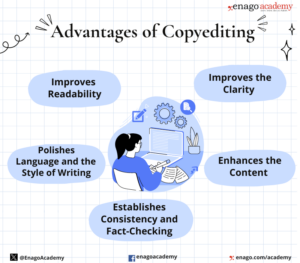
Learning to Write Fast Leaves Time for Copyediting to Make a Good Story Great
Many people have trouble writing. Most people have trouble writing fast. The exceptions are journalists and people with journalistic training. They learned how to write fast as an essential job skill.
 Their secret lies in writing with a purpose and a plan. An accomplished writer knows in advance why they are writing something, where to start and how they will explore the topic. A deadline serves as impetus to start writing. A short deadline is a spur to write fast.
Their secret lies in writing with a purpose and a plan. An accomplished writer knows in advance why they are writing something, where to start and how they will explore the topic. A deadline serves as impetus to start writing. A short deadline is a spur to write fast.
Writing well should always be the goal rather than writing fast. However, when speed is required, good writers know how to get the piece written on deadline. Journalists cover events with the expectation they will produce copy for publication or a script for broadcast on a deadline. They plan and write based on a strategy that fits into that deadline.
The best stories, regardless of deadlines, have an engrossing beginning, interesting details and a clear ending. That structure works for most writing assignments. It offers a familiar and easy-to-follow map on how to write a story, especially when you’re in a hurry.
The best stories, regardless of deadlines, have an
engrossing beginning, interesting details and a clear ending.
 The Inverted Triangle
The Inverted Triangle
Journalists are trained to write using an inverted triangle strategy. The most important fact goes in the lede, followed in descending order by supporting facts and secondary points. The inverted triangle was invented so editors could cut from the bottom of copy for space purposes without undermining the main thrust and facts of a story.
The inverted triangle is less essential in the digital age where story length isn’t determined by column inches. But it serves as an example of a structure that writers can use to write a story and write it fast. What the inverted triangle trained journalists to do was pinpoint the best fact of a story, put it first and provide supporting facts and quotes next. In the old days of journalism, reporters knew what it meant to write 10-inches of copy.
Structure remains important regardless whether the writing assignment is a 500-word op-ed, a 1,000-word blog or a 10-minute speech. Different rules apply based on the length of a story as well as where it will be published, posted or delivered. What doesn’t change is the need for a writing strategy that tells the story within the boundary of the assignment.
The length of an article, speech or presentation doesn’t necessarily reflect how long It takes to write. For example, writing a 500-word op-ed about a complex subject may take longer than writing a 1,000-word blog about an easy-to-tell story.
Research and Writing Fast
How long a story takes to write is mostly determined by how long it takes to research the topic, hone in on what’s most important to tell and decide what can be left out. With a solid plan of how to tell a story effectively and efficiently, writing it is easier and faster.
Even without a publication deadline, it’s a good practice to write a draft as quickly as possible that follows your research-based story plan of what to include and what to exclude. All facts are not equal. The ones that count are the ones that advance a storyline.
Proofreading and Copyediting
Regardless of speed, no piece is finished without proofreading and copyediting. Proofreading identifies missed or misspelled words and awkward sentences that need to be repaired to avoid mistakes in print. Copyediting looks at the substance of what’s written to ensure key points are made clearly and the story structure helps readers get from beginning to end.
 Copyediting also affords an opportunity for writers to think about missing points or holes in a story’s progression. It’s not uncommon for good writers to rewrite their ledes to be more engaging and on point. (My lede on this blog was rewritten three times.)
Copyediting also affords an opportunity for writers to think about missing points or holes in a story’s progression. It’s not uncommon for good writers to rewrite their ledes to be more engaging and on point. (My lede on this blog was rewritten three times.)
Proficient writers use the copyediting moment to assess how well their writing matches their purpose and plan. Sometimes the experience of writing a piece fairly rapidly opens a writer’s mind to a better approach, more descriptive language and better examples. Deadlines don’t always allow time for introspection, but experience will help writers build in such reflection to their writing timelines.
“Like Murdering Children”
Great writing is invariably well-edited writing. John Updike’s advice is worth repeating: “Writing and rewriting are a constant search for what one is saying.”
 Stephen King makes the same point more graphically: “When your story is ready for rewrite, cut it to the bone. Get rid of every ounce of excess fat. This is going to hurt; revising a story down to the bare essentials is always a little like murdering children, but it must be done.” King would say savage editing is what makes good writing great.
Stephen King makes the same point more graphically: “When your story is ready for rewrite, cut it to the bone. Get rid of every ounce of excess fat. This is going to hurt; revising a story down to the bare essentials is always a little like murdering children, but it must be done.” King would say savage editing is what makes good writing great.
Rewriting and writing fast may seem inconsistent. However, that’s a flawed conclusion. Writing fast with a purpose and a plan gives a writer the time and space to copyedit and, if necessary, rewrite their piece.
An intrinsic value of writing fast is to produce something to edit or rewrite. Stumbling with writer’s block is counterproductive. It’s better to write something bad quickly than to write nothing at all. Something bad can be improved. Something unwritten can’t.
 Steps to Writing Fast
Steps to Writing Fast
Writers bring different skills and backgrounds to their writing. They can augment their talent by reading, which offers clues on how to write better – and faster. Following the tracks of other writers can show how they use words and compose sentences, which can be enlightening and even inspiring.
Another source of information is to listen to how people speak, especially speakers who carefully choose their words and make their points lucidly. This helps tune your writer’s ear to speech patterns. Many contemporary forms of writing, such as blogs and social media posts, benefit from conversational language. Speeches and presentations also would benefit if written in a conversational style.
The Bottom Line
The moral of this story is writing fast is an acquired skill. Fast writers aren’t born, they are trained, often self-trained, to write fast with a purpose and a plan.
Getting a story written (or spoken in a recording device) provides a chance to revise and perfect it. Sadly, a story left unwritten remains a story untold.




